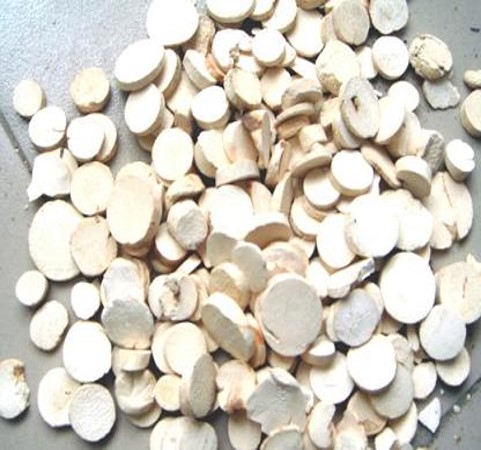| Origin |
The dried rhizome of Dioscorea opposita Thunb.
|
| Function and treatment |
Tonifying the spleen and nourishing the stomach, promoting the production of body fluid and benefiting the lung, tonifying the kidney and astringent essence. For deficiency of the spleen with little food, prolonged diarrhea, deficiency of the lung with asthma and cough, deficiency of the kidney with spermatorrhea, dysmenorrhea, frequent urination, deficiency of heat and thirst. |
| Origin and best harvesting period |
Yam is produced in all provinces and regions of the country, mostly cultivated or wild in sunny places in the mountains. It is mainly produced in Wenxian, Wuzhi, Boai, Qingyang and Meng counties in Henan, Taigu and Jieti in Shanxi, Anguo and Baoan in Hebei, and Dali, Weinan and Hanzhong in Shaanxi. Henan has the largest production and the best quality. The harvesting time of yam is influenced by the time of cultivation, combined with modern comparisons of the diosgenin content of different harvesting periods, the harvesting period of yam is appropriate in early October . |
